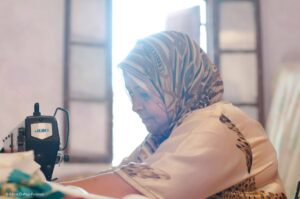
Morocco is on the verge of a mobile money renaissance after an unsuccessful start in 2010. A new law now allows non-banks to apply for a payment institution license and thus offer payment solutions, such as mobile money. Although past mobile money propositions failed to take off, new providers could disrupt the financial inclusion market in Morocco. While frantically preparing to launch, what should new providers consider if they want to successfully break into this market? Here’s a hint: women.
Mobile Money in Morocco: A Quick History
Morocco was one of the early mobile money market entrants when Maroc Telecom launched Mobi Cash in 2010. Meditel and BMCE followed with MeditelCash in 2013. However, the regulation was bank-focused, the wallets did not gain traction and thus were quickly forgotten.
Fortunately, Bank Al-Maghrib, the central bank of the Kingdom of Morocco, passed Law 103-12 aka the “New Banking Law” in 2015. The new regulation sought to increase the financial inclusion of the low-income and unbanked segment by bringing in other players. The law introduces Islamic banking and allows non-banks to apply for a payment institution license and issue e-money. Telecom operators, FinTech companies and other non-banks can now apply for a license to offer financial services, promising to change the playing field.
The central bank is reviewing applications and is expected to announce which companies have won a license by the end of the year. These companies are expected to launch mobile money services in 2018, albeit with limited products initially, such as money transfer and bill payment.
The Good News

Besides new and improved regulation, Morocco has other advantages to help the uptake of mobile money: a mandatory national identification card and a large influx of remittances.
The country has a mandatory a national biometric identification card: the Carte nationale d’identité électronique (CNIE) which covers the majority of the population. Morocco wants to do what India has done with Aadhaar and is working with the World Bank and the government of India to improve the program.
Remittances are one of the most successful catalyzers for mobile money, helping jumpstart adoption as seen in markets such as El Salvador. The case could be the same for Morocco: eight million Moroccan expatriates sent home USD$7 billion in remittances in 2015, the equivalent of 7% of gross domestic product (GDP).
The Not So Good News
New market entrants may find it difficult to compete on price and product diversity. Existing financial services from Al Barid Bank and WafaCash’s Hissab Bikhir for example, are already quite low cost. Al Barid Bank in particular has a strong position: with a mandate to serve the low-income market, it already offers a full suite of services to low-income clients. In fact, the growth from 34% to 62% in financial inclusion from 2010 to 2014 in Morocco is mainly attributed to the bank.
New and existing players will have to find a differentiator in order to compete. One way to do that is through women. Currently, providers only offer mass-market products as they believe this is how not to discriminate against women. This however, misses the crucial point that what works for women usually works for men, but not the other way around.
Making Digital Work for Women

What issues must market entrants consider in order to effectively serve this market?
- Easy access: Women face time and mobility constraints as not only they have to work but also take care of the children and household, and cannot often go far to access financial services. Bring the agent as close to her as possible.
- Reason to Use: Low-income women have money. Though some may not have income, they are responsible for the family budget and save what they have. Give her a reason to use your service and show her how to do it.
- Usable: Some low-income women are less educated and tech savvy then men. While education in Moroccois slowly improving, literacy rates remain low. There is an evident gender gap as approximately 9% of women are illiterate compared to 22.1% of men. Consider solutions that are easy to use, even voice-activated, and easily authenticated. PIN codes do not always work if she cannot write or know what they are.
- Human Touch: Women are loyal customers but require more information to make a decision and have more questions than men. Do not be impatient. Design marketing and agent training solutions accordingly. Explain to her how your services work and their benefits.
The Moroccan market structure is changing and players—new and old—have to figure out how to successfully navigate the new environment. Focusing on women will allow market entrants to break into a market that favors some existing providers. On the other hand, current market leaders can solidify their position by focusing on women, who happen to be half of their target market. This will ensure their companies are not left behind. Industry watchers, including Women’s World Banking, will be looking to see how new providers can effectively compete with them.



